New Renault Twingo is a smartphone-friendly four-wheeled funbox
Puts the cheerful back into cheap motoring with clever multimedia features
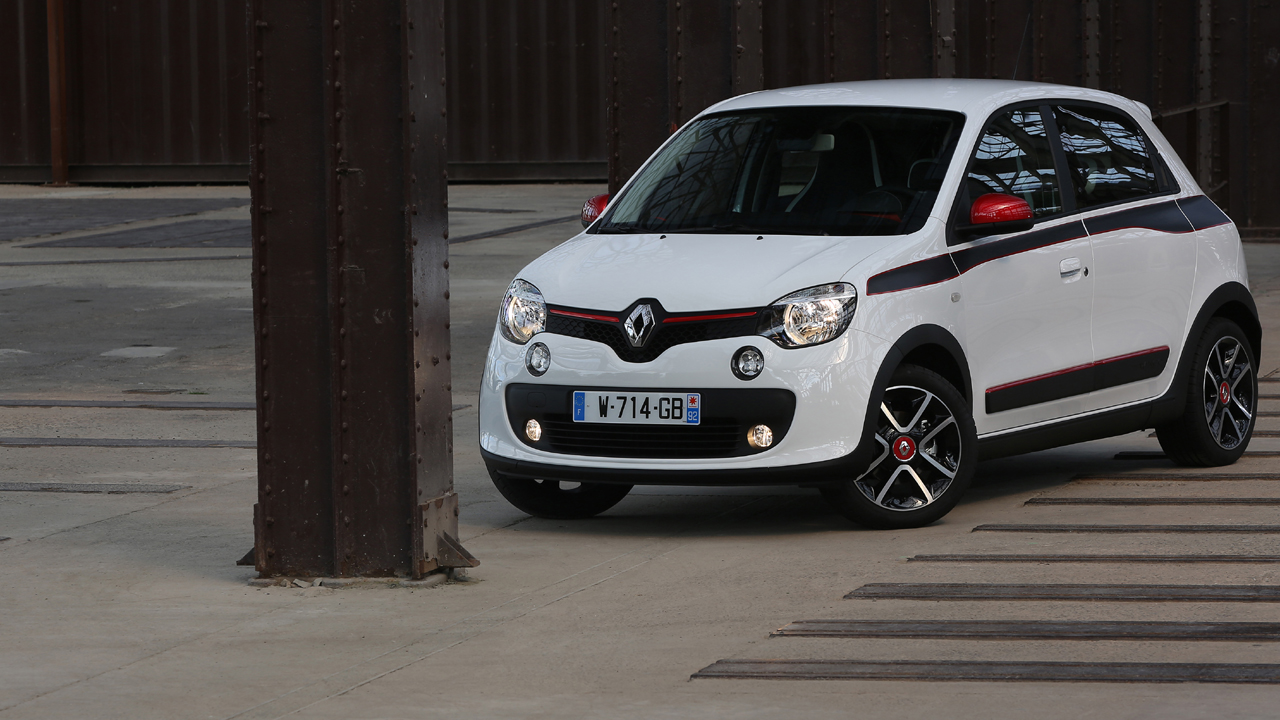
What with hybrid and electric power sources, LCD screens galore and all kinds of robotised self-driving features popping up all over the place, you could hardly dispute that there's ample innovation in the car market.
But there's also a certain sameyness, a certain inauthenticity when it comes to some conventional hatchbacks. BMW's range of MINI's is the poster car here. Excellent to drive, fun to look at, they're conventional to the bone and nothing like as innovative as the original 1960s Mini.
Enter, therefore, Renault's new Twingo. It's no hybrid or electric and it can't drive itself. But it is technically innovative and the result is a car that's more interesting to drive and own as a result.
So what's the big news? The engine is in the back, that's what. Yup, right in the back under the boot floor. Immediately on hearing this news, the specialist motoring press went mental imagining a pint sized Porsche 911 (itself famously rear-engined) for pennies.
Hey, the Twingo's engine is three cylinder, too, and that means it will sound like a flat-six engine, again as per the 911.
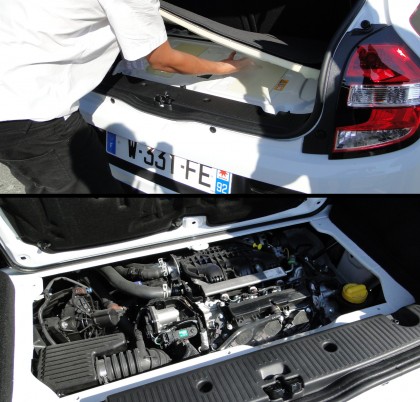
Not a Porsche 911
Of course, three cylinder engines sound nothing like flat sixes and the Twingo is nothing like the 911. But it's still a great little car. Here's why.
Putting the engine in the back is actually an engineering play that does a lot of good things for packaging in a very small car like the Twingo. It's a bit complicated, but it allows for more cabin space by extending the wheel base and enabling the dashboard to be pushed forward.
Get daily insight, inspiration and deals in your inbox
Sign up for breaking news, reviews, opinion, top tech deals, and more.
The only trade off is found at the rear, where the luggage compartment is raised to accommodate the engine. That said, the rear seats do fold full flat to enable a surprisingly level of kit swallowing in two-seat mode.
Twingo tech
Layout aside, is there anything else innovative about the new Twingo? At this end of the market, relative simplicity is a given. You're not going to get a fancy head up display or a nightvision camera.
But that doesn't mean you lose out on multimedia features. Renault actually offers two main options. There's an updated version of the Android based R-Link system, complete with an integrated touchscreen.
We haven't been hugely impressed by R-Link to date. It's the kind of platform that sounds great on paper – Android based, app enabled, touchscreen controlled – but feels clunky and unfinished in practice. It's also a cost option on the Twingo.
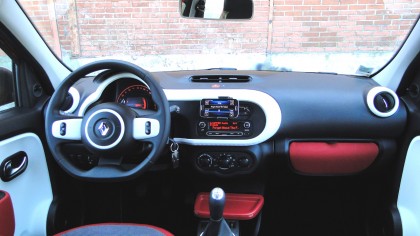
Smartphone integration
Instead, much more intriguing is the new R and Go alternative. This is all about smartphone integration. It supports both Apple iOS and Android devices and is composed of a smartphone app, a universal smartphone cradle on the dash and integration into the Twingo's built-in telematics platform.
Essentially, you slot your smartphone into the cradle, plug in the cable and your handset becomes the Twingo's multimedia interface.
Some of the things it does are just as you'd expect. There's music playback, handsfree telephony and navigation. Notably, the navigation uses locally stored maps, so there's no need for a data connection.
What you might not have expected and also demonstrates the extent to which the app integrates with the Twingo's systems are telematics elements. That includes a rev counter (not otherwise available in a Twingo), trip computer and eco-drive tracking app which is designed to both score your ability to drive efficiently and help you improve your skills.
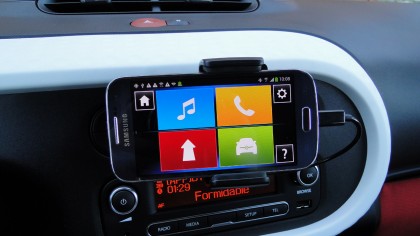
Appy days
During our time with the Twingo it was all running on a Samsung handset. The app is still in beta and we couldn't install on an iPhone to test how well it works with Apple devices. However, overall we'd give it a big thumbs up. It suits the Twingo's cheap but cheerful overall vibe perfectly.
You're never going to be able to put a full-feature, high-end system like BMW iDrive or Audi MMI in a car like the Twingo. Likewise, R-Link still looks rough around the edges. Smartphone integration is the way forward in this part of the market and Renault has done a good job.
So, the Twingo has surprisingly good multimedia chops. But what's it like to sit in and drive? Renault had two engine options on the launch for us to try, both three cylinder 0.9-litre petrol efforts, one with 89bhp courtesy of a turbo charger, the other naturally aspirated and good for 69bhp.
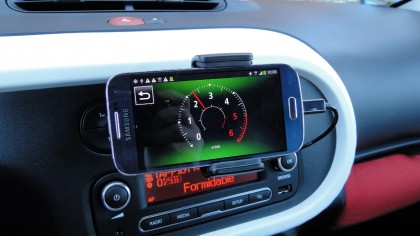
On the road
The turbo lump almost borders on lively, but both cars are pretty slow. If you're looking for a mini driftmobile thanks to the Twingo's rear-engine, rear-wheel drive layout you'll need to job on, too. There's no enough power and the chassis is set up to resolutely understeer.
And yet there's still something special about the way the Twingo moves. The lack of engine weight over the front axle enables it to float pleasing over poor road surfaces. And while the understeer is ever present, you can feel the lack of mass resisting changes of direction. It's a pleasant little car to pedal.

The interior is bright, airy and contemporary, to boot. OK, pretty much all the plastics are hard and scratchy. But the overall vibe is simple and cheerful not cheap and nasty. It's also a much more coherent design, inside and out, than the messy, derivative previous generation Twingo, which was also a very conventional and not particularly impressive front-engine, front-wheel drive hatchback.
Overall, then, the Twingo is definitely a success. It's genuinely innovative and shoulod be great to live with, both in terms of the flexibility of the cabin and the clever smartphone integration. In fact, we'd say it's even better than the very first Twingo that appeared way back in 1992. Nice job, Renault.
The 89bhp Renault Twingo TCe 90 is on sale now for £11,695 in the UK.
Technology and cars. Increasingly the twain shall meet. Which is handy, because Jeremy (Twitter) is addicted to both. Long-time tech journalist, former editor of iCar magazine and incumbent car guru for T3 magazine, Jeremy reckons in-car technology is about to go thermonuclear. No, not exploding cars. That would be silly. And dangerous. But rather an explosive period of unprecedented innovation. Enjoy the ride.